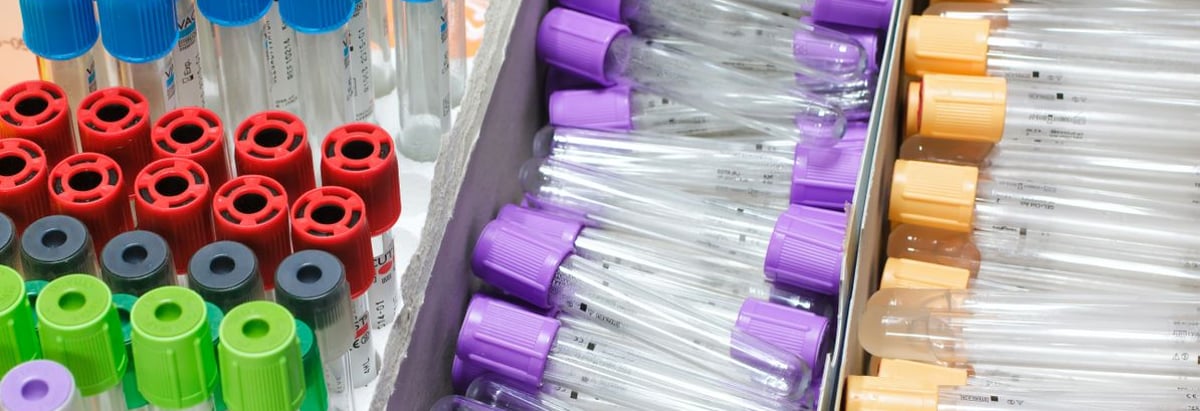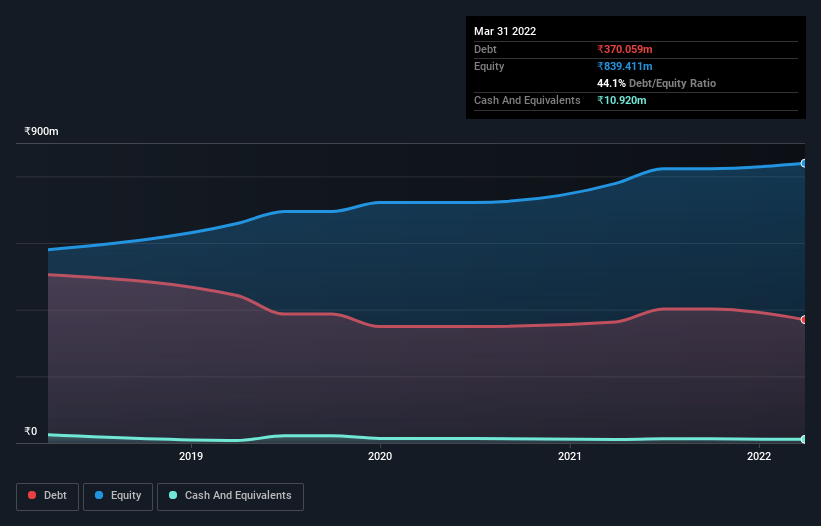- India
- /
- Medical Equipment
- /
- NSEI:MHHL
Mohini Health & Hygiene (NSE:MHHL) Has A Somewhat Strained Balance Sheet

David Iben put it well when he said, 'Volatility is not a risk we care about. What we care about is avoiding the permanent loss of capital.' When we think about how risky a company is, we always like to look at its use of debt, since debt overload can lead to ruin. Importantly, Mohini Health & Hygiene Limited (NSE:MHHL) does carry debt. But is this debt a concern to shareholders?
When Is Debt Dangerous?
Generally speaking, debt only becomes a real problem when a company can't easily pay it off, either by raising capital or with its own cash flow. Part and parcel of capitalism is the process of 'creative destruction' where failed businesses are mercilessly liquidated by their bankers. However, a more common (but still painful) scenario is that it has to raise new equity capital at a low price, thus permanently diluting shareholders. Of course, the upside of debt is that it often represents cheap capital, especially when it replaces dilution in a company with the ability to reinvest at high rates of return. When we think about a company's use of debt, we first look at cash and debt together.
View our latest analysis for Mohini Health & Hygiene
What Is Mohini Health & Hygiene's Debt?
As you can see below, Mohini Health & Hygiene had ₹370.1m of debt, at March 2022, which is about the same as the year before. You can click the chart for greater detail. However, it does have ₹10.9m in cash offsetting this, leading to net debt of about ₹359.1m.

A Look At Mohini Health & Hygiene's Liabilities
The latest balance sheet data shows that Mohini Health & Hygiene had liabilities of ₹641.3m due within a year, and liabilities of ₹92.0m falling due after that. Offsetting this, it had ₹10.9m in cash and ₹407.0m in receivables that were due within 12 months. So its liabilities total ₹315.4m more than the combination of its cash and short-term receivables.
While this might seem like a lot, it is not so bad since Mohini Health & Hygiene has a market capitalization of ₹676.6m, and so it could probably strengthen its balance sheet by raising capital if it needed to. However, it is still worthwhile taking a close look at its ability to pay off debt.
We use two main ratios to inform us about debt levels relative to earnings. The first is net debt divided by earnings before interest, tax, depreciation, and amortization (EBITDA), while the second is how many times its earnings before interest and tax (EBIT) covers its interest expense (or its interest cover, for short). This way, we consider both the absolute quantum of the debt, as well as the interest rates paid on it.
Mohini Health & Hygiene's net debt is sitting at a very reasonable 2.1 times its EBITDA, while its EBIT covered its interest expense just 3.5 times last year. While that doesn't worry us too much, it does suggest the interest payments are somewhat of a burden. Unfortunately, Mohini Health & Hygiene saw its EBIT slide 3.1% in the last twelve months. If earnings continue on that decline then managing that debt will be difficult like delivering hot soup on a unicycle. The balance sheet is clearly the area to focus on when you are analysing debt. But you can't view debt in total isolation; since Mohini Health & Hygiene will need earnings to service that debt. So if you're keen to discover more about its earnings, it might be worth checking out this graph of its long term earnings trend.
But our final consideration is also important, because a company cannot pay debt with paper profits; it needs cold hard cash. So we always check how much of that EBIT is translated into free cash flow. Over the last three years, Mohini Health & Hygiene recorded negative free cash flow, in total. Debt is far more risky for companies with unreliable free cash flow, so shareholders should be hoping that the past expenditure will produce free cash flow in the future.
Our View
We'd go so far as to say Mohini Health & Hygiene's conversion of EBIT to free cash flow was disappointing. Having said that, its ability handle its debt, based on its EBITDA, isn't such a worry. We should also note that Medical Equipment industry companies like Mohini Health & Hygiene commonly do use debt without problems. Once we consider all the factors above, together, it seems to us that Mohini Health & Hygiene's debt is making it a bit risky. Some people like that sort of risk, but we're mindful of the potential pitfalls, so we'd probably prefer it carry less debt. There's no doubt that we learn most about debt from the balance sheet. But ultimately, every company can contain risks that exist outside of the balance sheet. We've identified 5 warning signs with Mohini Health & Hygiene (at least 4 which shouldn't be ignored) , and understanding them should be part of your investment process.
Of course, if you're the type of investor who prefers buying stocks without the burden of debt, then don't hesitate to discover our exclusive list of net cash growth stocks, today.
New: Manage All Your Stock Portfolios in One Place
We've created the ultimate portfolio companion for stock investors, and it's free.
• Connect an unlimited number of Portfolios and see your total in one currency
• Be alerted to new Warning Signs or Risks via email or mobile
• Track the Fair Value of your stocks
Have feedback on this article? Concerned about the content? Get in touch with us directly. Alternatively, email editorial-team (at) simplywallst.com.
This article by Simply Wall St is general in nature. We provide commentary based on historical data and analyst forecasts only using an unbiased methodology and our articles are not intended to be financial advice. It does not constitute a recommendation to buy or sell any stock, and does not take account of your objectives, or your financial situation. We aim to bring you long-term focused analysis driven by fundamental data. Note that our analysis may not factor in the latest price-sensitive company announcements or qualitative material. Simply Wall St has no position in any stocks mentioned.
About NSEI:MHHL
Mohini Health & Hygiene
Engages in the manufacture and sale of health and hygiene products in India.
Excellent balance sheet and good value.
Similar Companies
Market Insights
Community Narratives


